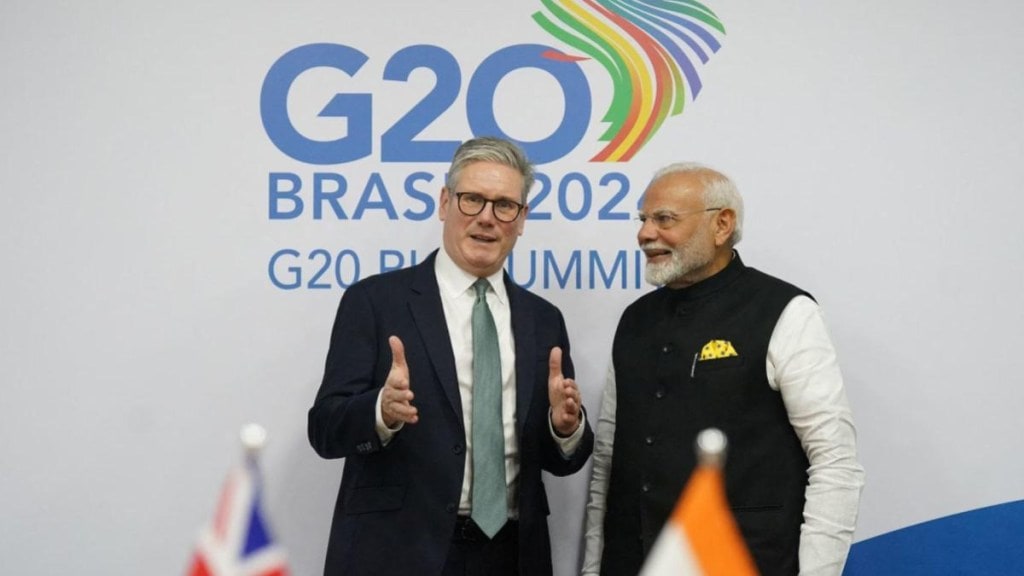After more than three years of negotiations, India and the UK have clinched a landmark free trade agreement (FTA). This deal, between the world’s fifth and sixth largest economies, could well serve as a template for equally ambitious FTAs with the European Union, other developed nations, and a trade agreement with the US. Bilateral trade in goods and services between India and the UK is expected to double from the current $60 billion in five years; today, it’s a surplus of $11.23 billion in India’s favour. The FTA appears mutually beneficial and the preferential access to one of the world’s most affluent markets comes as a boost for India’s high-end merchandise exports.
Even as finer details are expected, the broad terms of the agreement suggest it’s a win-win. In essence, New Delhi will get duty-free access to 99% of the merchandise shipments in the UK. Moreover, exports of chemicals, textiles, leather, gems and jewellery, and base metals, where the UK tariffs are relatively high, will get a fillip. In return, India will cut duties on 90% of tariff lines for the UK, with a commitment on zero tariffs on 85% items in the next 10 years.
Keeping in mind the concerns of local businesses, sensitive items like dairy products and apples have been excluded from the plan. India has thrown open the auto sector to UK auto manufacturers by slashing import duties from 100% to just 10%. However, as officials have clarified, quotas will be prescribed to ensure local players are protected. According to reports, there will be no “out of quota” reduction in duties for electric vehicles. India now gets access to the UK market for internal combustion engine as well as electric vehicles, giving it an opportunity to boost export of vehicles and parts; this will help India become a part of the global supply chain.
New Delhi has acceded to the UK’s long-standing demand for lower tariffs on liquor — duties on whisky and gin are to be halved to 75% immediately and further to 40% in a decade. This is bound to hurt local liquor manufacturers. But, apparel manufacturers are delighted. They believe the tariff cuts will enable them to compete more effectively with countries like Bangladesh and Vietnam; by one estimate, the immediate additional opportunity could be $1 billion worth of goods. The gains in services trade, where India has been looking to make a breakthrough, are fairly substantive. The UK will provide greater access to service suppliers in digitally-delivered, financial, professional, and educational services. While it is not clear how many Indian professionals will be able to access the UK’s employment market, the Financial Times indicates that only 100 extra visas for Indian workers a year are on offer.
Meanwhile, negotiations on the bilateral investment treaty, which was expected to be signed along with the FTA, are on. The talks are believed to be stuck as the two sides are unable to bridge their differences on dispute resolution and inclusion of taxation. A conclusion of this treaty could help increase investments by India and the UK in each other’s economies. Foreign direct investment by the UK in India was $23.25 billion in 2023 compared with India’s $17.51 billion in the UK. On the UK’s carbon border adjustment mechanism — which makes our steel exports costlier — New Delhi has said it would retaliate. Even so, that India and the UK have concluded a mutually beneficial trade deal is a significant achievement.
